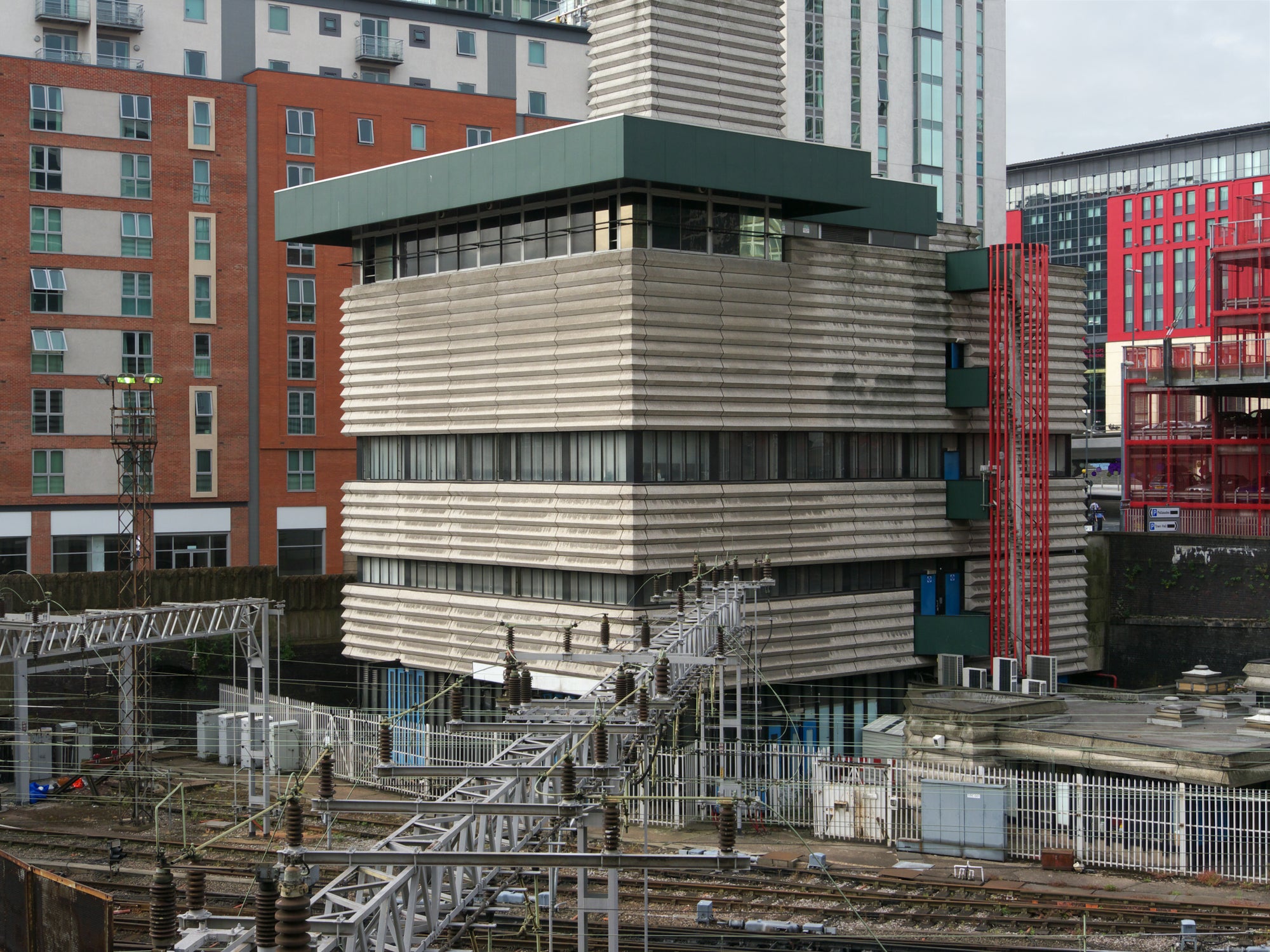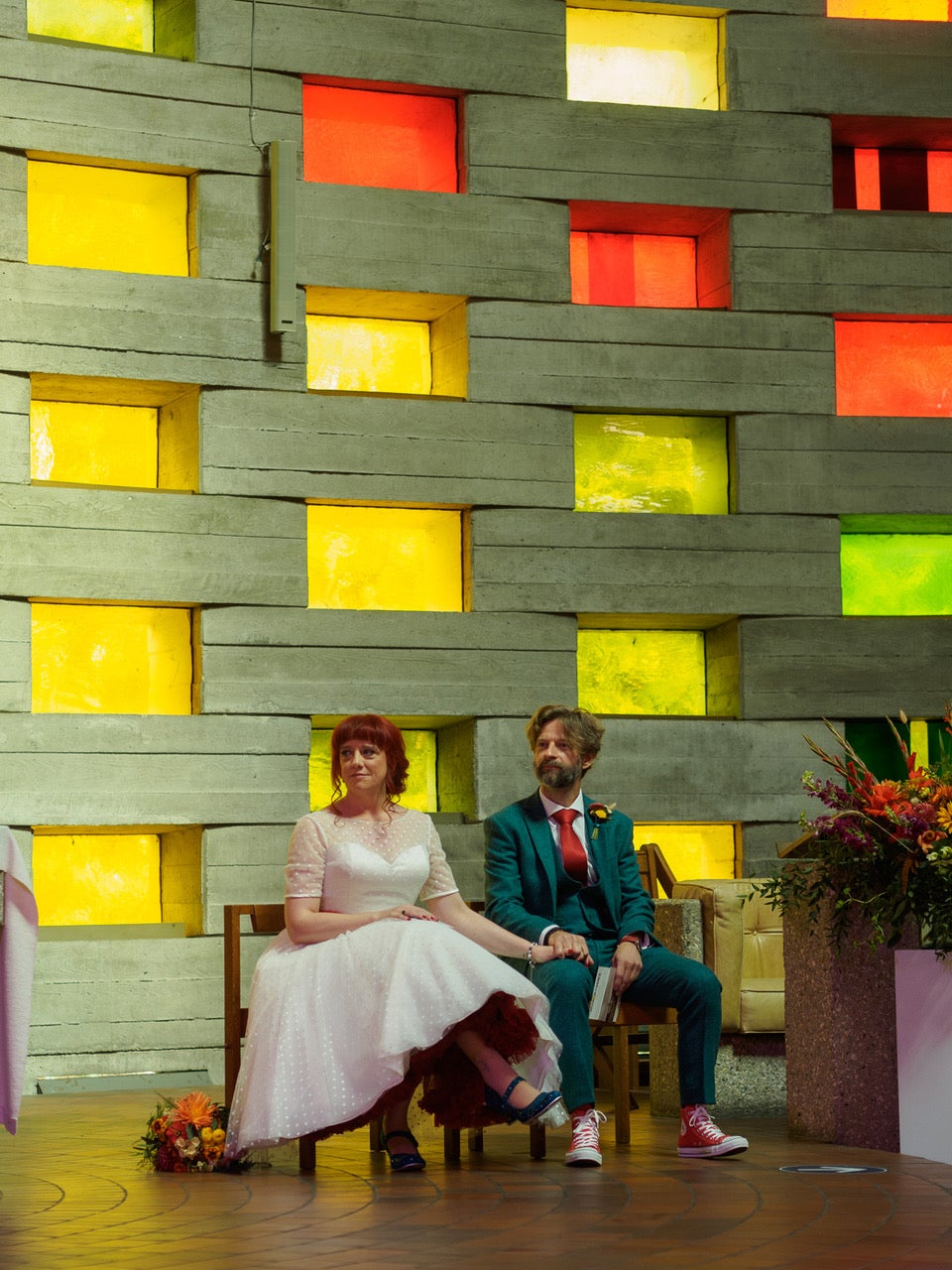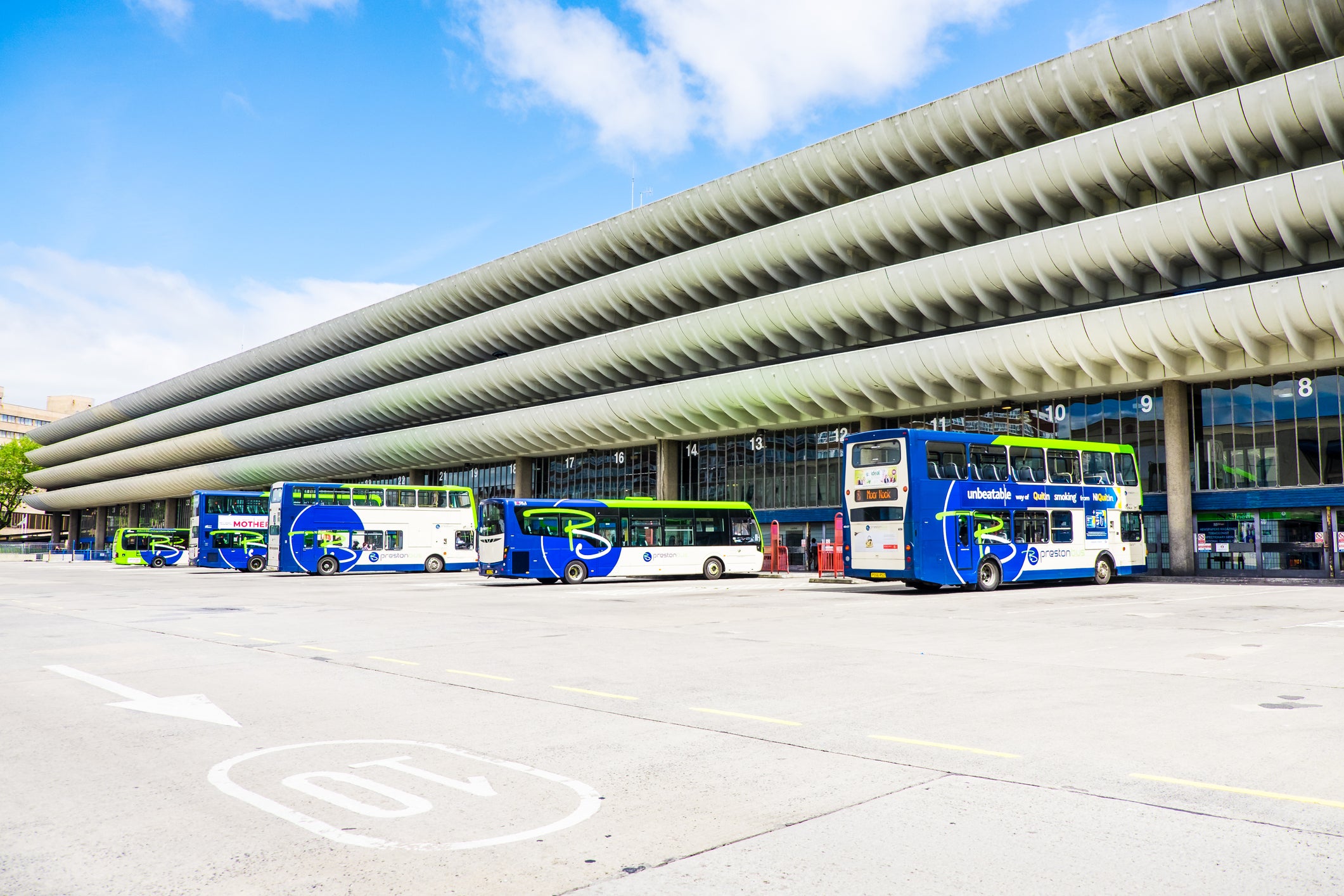I’ve had a lifelong love affair with concrete buildings – so much more beautiful than a country estate
One day these concrete museums will be hundreds of years old, writes Angela Barnes, and they will tell people how we lived in the latter part of the 1900s


The latter part of the 20th century gets a bad rap when it comes to architecture. But I want to take a moment to speak up for concrete, for the so-called “monstrous carbuncles” of modernist architecture that get labelled as “ugly”.
I love these buildings. I mean, I really love them. Raw concrete to me is beautiful. My engagement ring is a square of concrete set in silver; my husband and I wear concrete wedding bands; our wedding was in Basil Spence’s concrete and stained glass creation, the Meeting House at Sussex University. Even some of the tables at our wedding breakfast were named after concrete buildings, such as the Signal Box at Birmingham New Street Station or the majestic Pennine Tower at Lancaster Services on the M6.
I am not a communist, but I really like the look. Contrary to popular belief though, concrete as a building material didn’t appear out of nowhere in the 1950s to rebuild a destroyed Europe; it was used by the Mayans, the Romans and the Ancient Greeks. It is the second most used substance on earth after water.
We think of concrete structures now as symbols of failed socialist utopias, or poverty and social problems. But that is not the fault of the concrete. In fact, following the slum clearances of the earlier part of last century, and then two world wars, by the 1950s working families were delighted with their new, modern concrete homes, with indoor toilets and plenty of space.

But of course the good intentions of the welfare state and the era of the Festival of Britain were thwarted by restrictive spending policies of future governments, the large scale closure of manufacturing and eventually a right to buy your council housing. These modernist estates were left with no funding and were occupied by the ever increasing number of unemployed people, and those with severe social needs that governments were refusing to meet. The estates were neglected, the people were neglected and an association was born between concrete structures and social and moral decline.
This seems to have led to a collective snobbery about modernist buildings, but I think actually, if you spent more time with them, you could see what I see. The word “brutalist” is often used to describe them, but the “brutal” in it is unjust I think. The name comes from “béton brut”, the French term for raw concrete.
Beauty in architecture is different to beauty in art. Art is to be looked at, but architecture is practical and purposeful. It’s our homes, our places or work, our municipal buildings. We are not just looking at it, we are mostly right there inside it. Of course I can appreciate ornament in architecture, but that isn’t what gets me emotional about it.
The architecture I love most is intrinsically linked with nostalgia. Nostalgia is a powerful force in human beings. It comes from the Greek “nostos” meaning “homecoming” and “algos” meaning “pain”. Part of us, wherever we end up, is longing for a sense of home, of where we began, of our childhood. We spend a lot of our adult lives looking for the thing that hits our N-spot. It’s why, when I’m in need of comfort, you could invite me to the fanciest restaurant to cheer me up, but all I really want is a tin of Heinz ravioli, smothered in grated cheddar, just like my mum would serve me after a tough day at the school coalface.
I grew up in a pretty typical English market town in the 1980s and I had a very concrete childhood. By which I mean, there was a lot of concrete about. I don’t mean it was stable. If it had been, I wouldn’t be a stand-up comedian now. But concrete was part of my everyday life. Maybe not as much as if I’d lived in Thamesmead or Park Hill, Sheffield, but it was still everywhere in late 20th century Britain. It was our playgrounds, our schools, the parade of shops. It formed the subways under the main roads of our estate that my friend Jo and I would dare each other to whizz through on our rollerboots. On the Vinters Valley Nature Reserve near where I grew up, there was natural beauty all around, but I would seek out the hidey-hole of a concrete culvert to sit in when it was dry enough and contemplate the worries of my day.
So while I can see the beauty in a classical palace, I can feel it viscerally in something like Preston bus station. It’s a comfortable familiarity, despite never having lived in or even visited Preston as a child, I know it and it is somehow home.

Prince Charles railed against modernist architecture in the 1980s, demanding better for the country. But of course, if you’ve grown up in Buckingham Palace, and not on a housing estate in Kent, then classical architecture is what is hitting your N-spot, and not the Hammersmith Flyover.
We love a historical building in this country, and we have a lot of them. I remember visiting New Zealand and seeing a volcano that was younger than the pub at the end of my street back home. But having a lot of older buildings, that we give a more intrinsic historical value to, isn’t a reason to erase a more recent style of architecture that was so prominent. In doing that we deny future generations knowledge of their own history.
We’ve all been to a Ye Olde Medieval Inn somewhere that proudly displays a boast such as, “Charles I stopped here in his way to battle in 1649”. It would be a travesty to tear down a place like that, we understand that. Yet just off Oxford Street in 2019, the Welbeck Street car park was demolished. It was a thing of tessellated concrete beauty, like someone had poured cement into a beehive. I was always mesmerised by it. Imagine the people that must have parked their cars there over the years. It was in central London, so I bet at least the odd James Bond actor or rock legend did. And what is a car park if not a stopping off point on a journey, just like the ye olde inns. They are no less a piece of our history, it’s just history that hasn’t ripened yet.
Look, I know that not all buildings can last forever. They fall into disrepair, room needs to be made for modernisation and development. However, I feel sad that it is so often these much maligned structures that are the ones for the chop. Maybe it’s because a castle holds the key to the history of the elite, which is why they matter to the elite, whereas a car park or bus station is about the rest of us. And it is of course the elite who largely have their hands firmly on the public purse strings. But history should be about all of us.
There is a section of society that thinks knocking down statues of slave traders is erasing our history, but that knocking down modernist architecture isn’t. I find a statue of Edward Colston infinitely uglier than the Tricorn Shopping Centre in Portsmouth was, and I could learn a lot more about social history by walking around the latter than looking at the former.
They may only have been built a little over half a century ago now, but one day these concrete museums will be hundreds of years old, and they will tell people how we lived in the latter part of the 1900s. Our history is set in concrete, so let’s stop denying it.






Join our commenting forum
Join thought-provoking conversations, follow other Independent readers and see their replies
Comments